Plymouth Barracuda appears at the SEMA Show in a special restomod: the owner has turned it into a four-door sedan which is impressive for the attention to detail
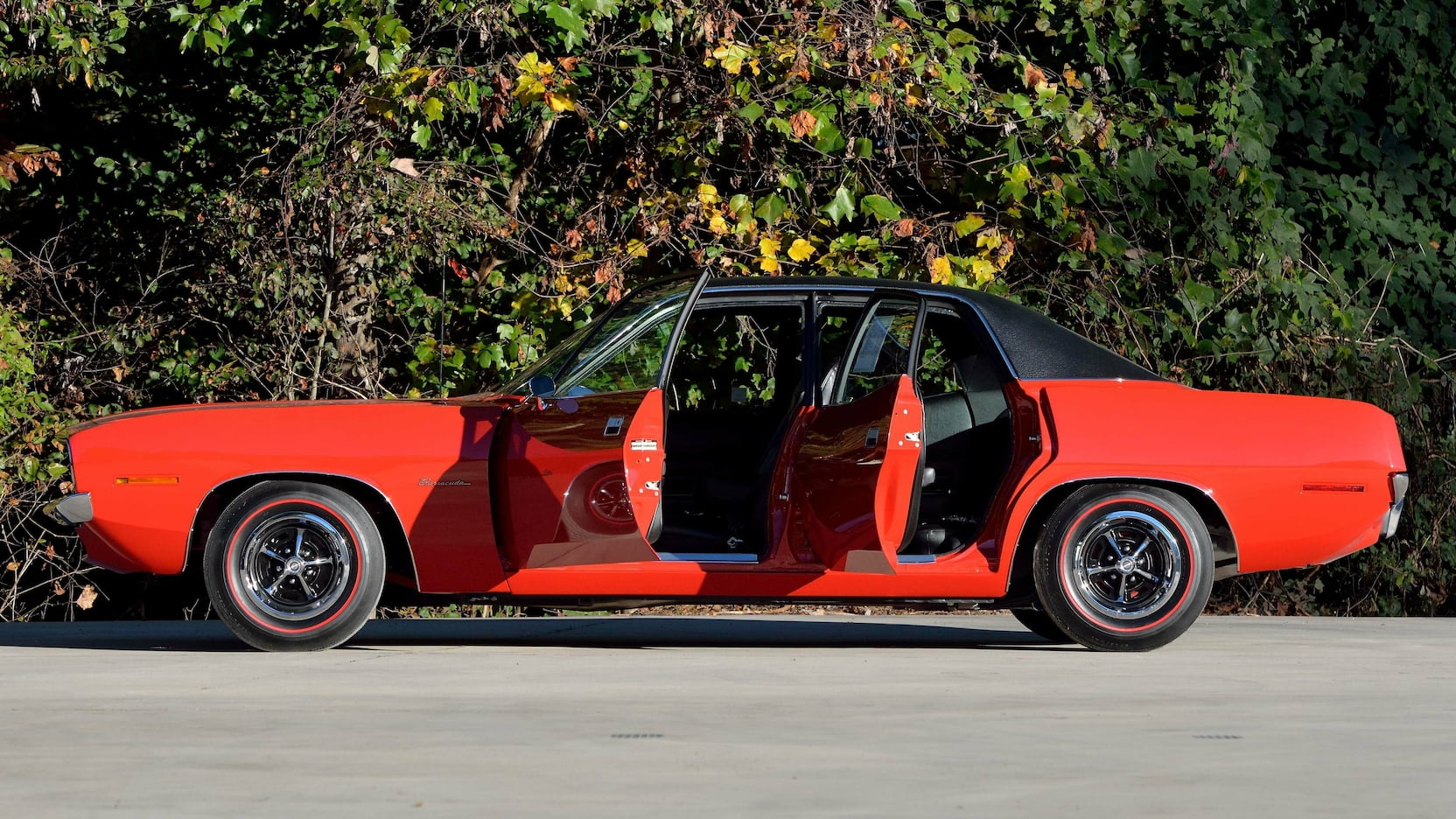
Restomod has become a common word among car enthusiasts. It refers to the practice of restoring a car, usually a classic one, to pristine condition while making some changes. Those changes may be improving its performance, applying any tuning school to its design, or something more radical. Every now and then, we see restomodded cars that became entirely different. New body style, more doors, new engine…
Sure, there are no surprises here – that is the spirit of any Fast & Furious-inspired car fan. The issue is that those modifications are often so complex that we no longer recognize the base car. This is precisely what has motivated me to write this article. Rather than looking like a Burning Man vehicle, the 1970 Plymouth Barracuda above was so realistically transformed that it could easily pass as a typical production car.
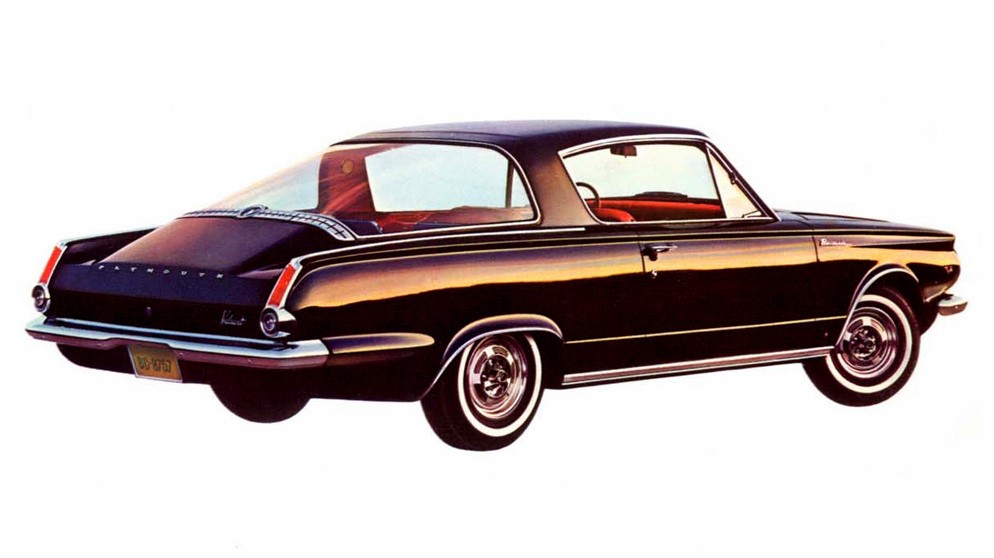
First, what is the Plymouth Barracuda?
You know how we all credit the Mustang for founding the segment of pony cars? The Barracuda was one of the first models designed to compete with it. Chrysler had a limited budget back then, since it was still investing in the Turbine Car project, so it just followed Ford’s steps. The Barracuda borrowed the Valiant’s platform and most design parts. A notable exception was the signature wraparound rear windshield.
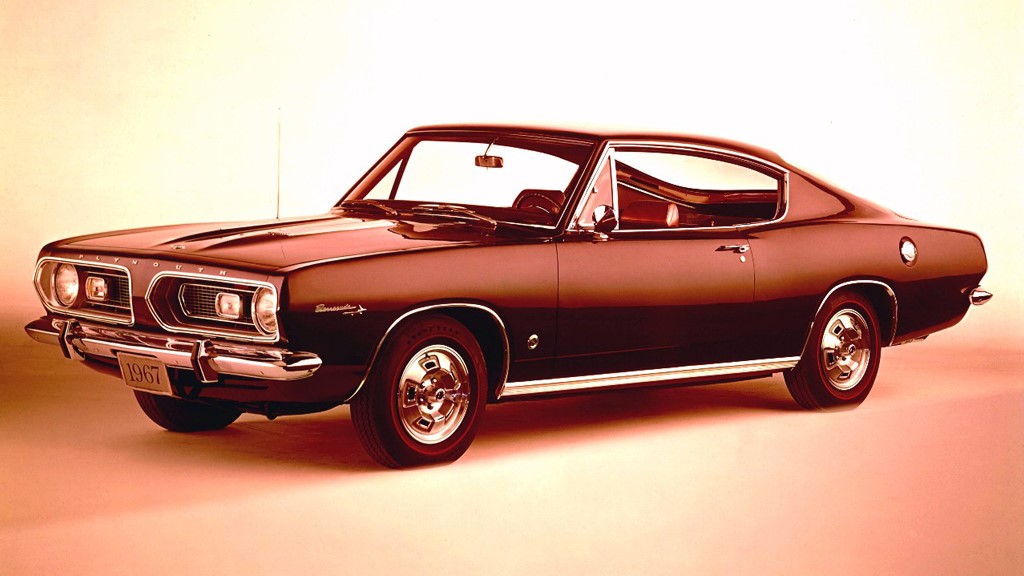
Sadly, such similarity ended up limiting its appeal. The Mustang sold so well that it made us overlook the fact that the Barracuda actually arrived a little earlier. Plymouth gave it small upgrades over the years until it was time for a new generation. The 1967 model built a stronger personality, but still shared many parts with the Valiant. This generation had bigger engines and multiple performance improvements.
The Barracuda car would only shine on the third generation. Chrysler went all the way and gave it unique styling; despite using the same E platform, it shared no visual parts with the Dodge Challenger. The Coke-bottle design was paired with huge Hemi engines, high horsepower, and a long color palette in the pony car fashion and it became a success. That history would only come to an end because of the oil crisis.
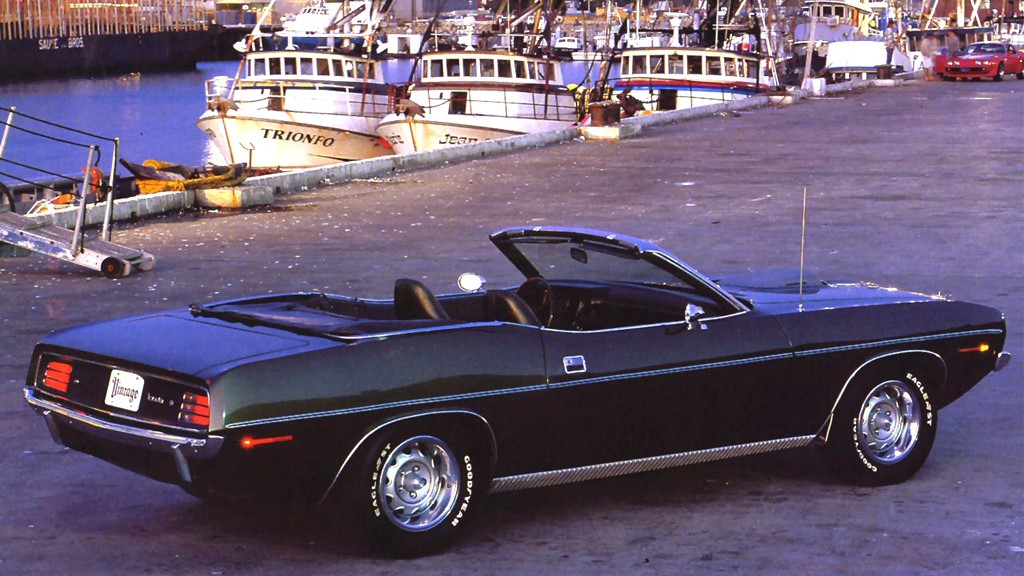
Now, what about the restomod?
As we have written here, it is common for fans to restomod classic cars. Their top goal is to work on their performance, whether by making it more efficient, more usable, or simply higher. As the examples show, this type of restomodding involves upgrades to the original engine or complete changes. When it comes to foreign cars, it is also usual to replace it with a local crate engine for easier and cheaper maintenance.

Other tuners go further and work on the car’s design. Those restomod cases may be as simple as adding modern parts, or as complex as reworking the entire car – not always with aesthetic results. We can even mention a niche of that practice, often named retromod. In that case, the owner reworks a modern car so as to give it design traits of classic cars. It is common to make it look like its previous generations.
While that practice is popular and has many fans around the world, it is also true that it is distant from the reality. Many of those cars became personal projects; something entirely different which the owner chose to tailor to their own taste. The Barracuda car shown on the following pictures is different: in this case, the owner decided to make things more challenging and restomod the pony car in a highly realistic way.
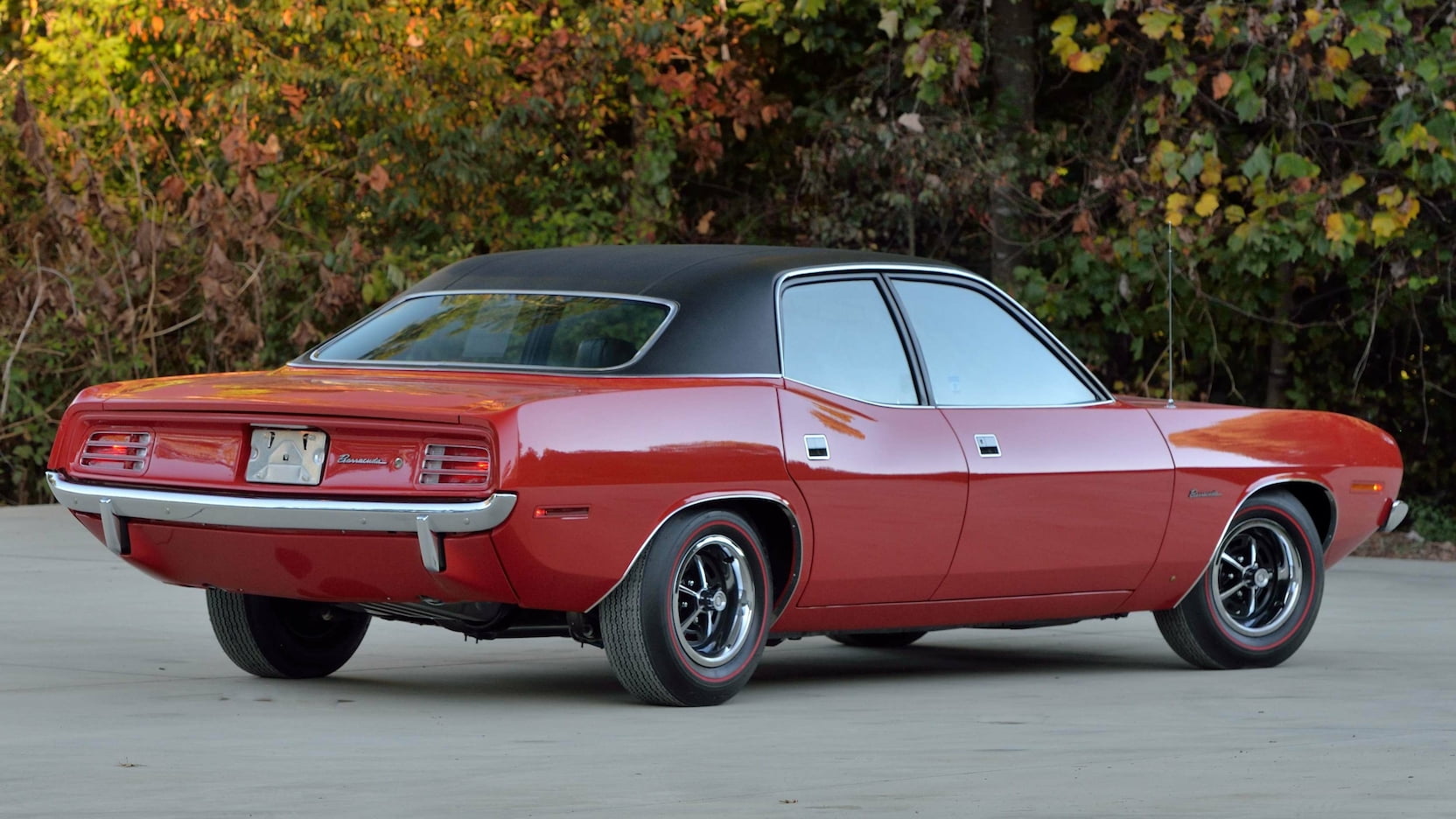
The 4-door Plymouth Barracuda
The best way to define this car is to say it has undergone the necessary changes to receive four doors… and nothing else. The roofline was gracefully reworked to accommodate rear windows of adequate size. And the doors were replaced with shorter ones to make room for the rear pair. The goal was to make the car look like Plymouth made it itself, and it shows. It could easily pass as a regular production vehicle.

Such a standard of overall quality would be hard to reach even on Photoshop. Dave Walden, late owner of restoration products supplier ECS, used his expertise in Mopar tuning to hand-fabricate many of the new parts. The cabin received attention as well, with a pair of black seats whose style mimics that of the front ones. The fact that the bench is made for only two people only contributes to the car’s sportiness.
This restomodded car first appeared at the 2016 SEMA Show. Walden made the model realistic enough to create a fake window sticker for the four-door sedan. The VIN, however, is legal and ends in 100000. The rest of the car either replicates the original content or has been slightly upgraded. It uses a 5.9L V8 with a four-barrel carburetor, which makes 275 hp and the TorqueFlite transmission. The paint is Rallye Red.
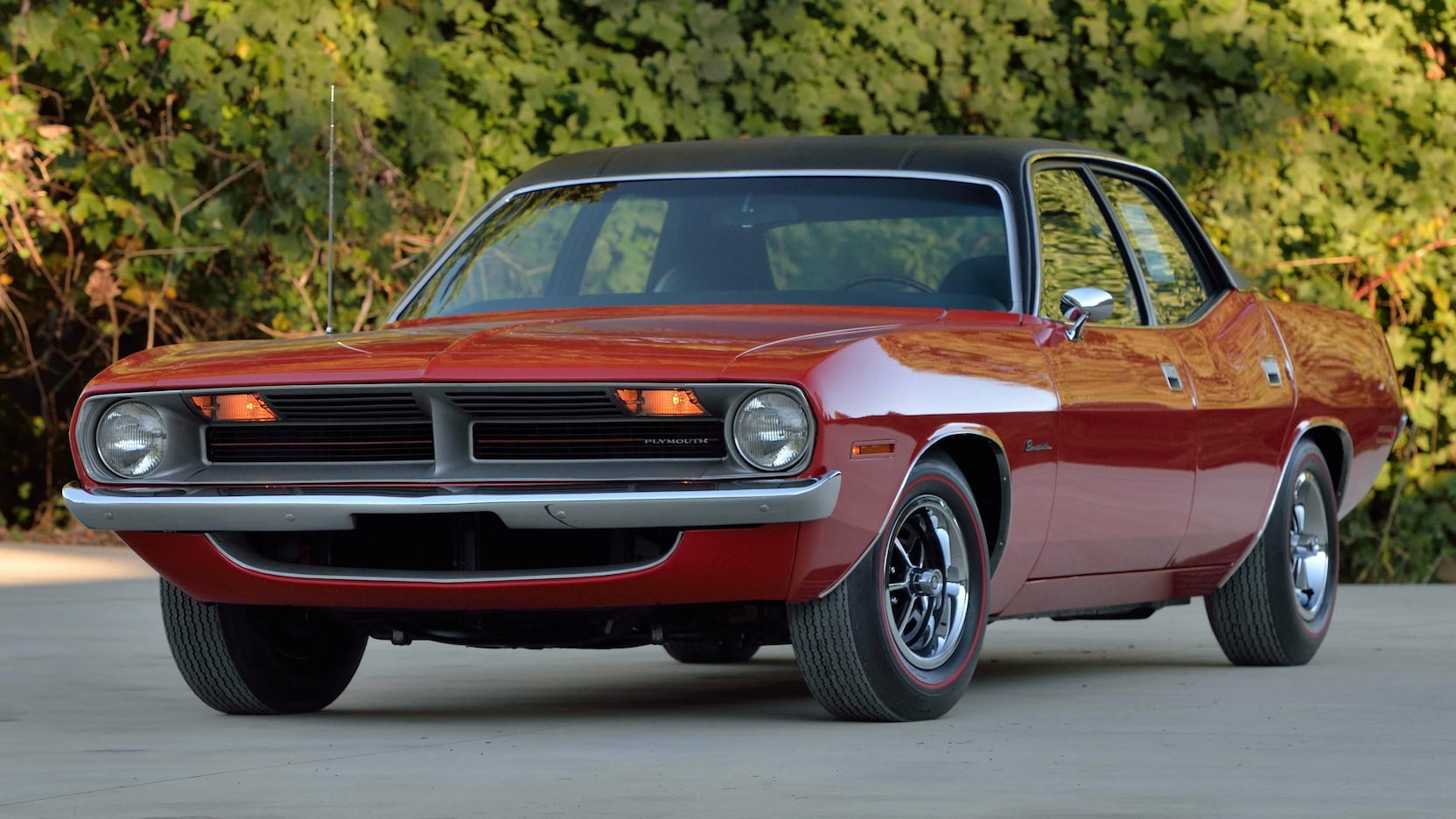
If you are interested in the car, Mecum Auctions is going to auction it from January 4th to 15th. You can get an initial idea of the car’s condition by learning that “the tires had never even touched pavement until 2022.” Now, what do you think about this restomod? Do you believe that more car enthusiasts should try and reach this level of realism? Or do you prefer them to keep setting their imagination entirely free?
Danillo Almeida has explored his passion for cars in two distinct ways. The first one is his graduation course in Mechanical Engineering, which will hopefully lead to a job position in the field. The other one is expressing his knowledge and opinions on the matter through writing. Almeida has already contributed to blogs, stores, and websites in general writing automotive content in many formats.



